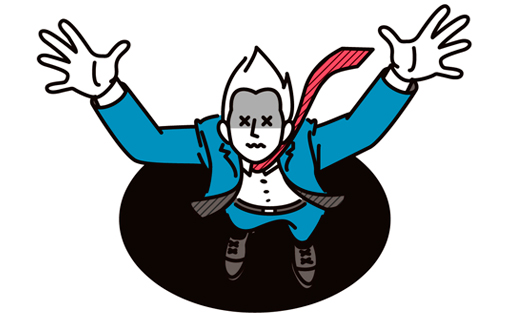BY AMY COOLEY
Whether you’re the owner, a member of the management team, or a family member or friend who “helps out” in the business, when you work with people you are close to personally, it can be easy to get too casual when it comes to the business aspect of the relationship. Certainly, it can be a great thing to work with family and friends; you know each other so well, you enjoy each other’s company (usually), and you have common interests and experiences. But for the same reasons, it’s easy to blur those lines as you get too comfortable. And then when something starts to go off the rails, you may find yourself, well, up the proverbial creek.
 Here, we’ll hit on some of the HR management and legal pitfalls that small or family businesses may run into and offer some recommendations for setting yourself up for better success:
Here, we’ll hit on some of the HR management and legal pitfalls that small or family businesses may run into and offer some recommendations for setting yourself up for better success:
1. Failure to define roles. “But, but, but ... we’re a small family business. We all just do what needs to be done.”
I hear you! I really do, and I’m not suggesting that job descriptions need to be narrowly defined, or even that tasks can’t be shared or overlap. What is so important, though, is to clarify who actually owns different aspects of the business management: reporting structures and where “the buck stops” when it comes to decision-making in each category, not to mention who communicates goals, procedures, and performance coaching with employees. Without this kind of clarity, critical tasks may fall through the cracks because everyone thinks someone else is taking care of it. And when the reporting and decision-making structure is unclear, your team won’t understand the confusing and conflicting messages they are receiving, and performance, confidence, and engagement will erode.
 From a legal angle, ill-defined management roles can be costly when leaders choose to part ways.
From a legal angle, ill-defined management roles can be costly when leaders choose to part ways.
2. Missing out on diverse contributions. In smaller or family-owned businesses, it’s easy to find a leadership team with similar backgrounds. But when “the call is coming from inside the house” every time, you run the risk of falling into tunnel vision and groupthink. Different perspectives are crucial for checks and balances, identifying new opportunities, spotting red flags, and finding meaningful solutions. Differing opinions and outside perspectives result in better problem solving every time. Without some conflict, there is little communication and growth. You need people who aren’t like you to bring fresh perspectives and unique insights.
Some remedies for this include open-mindedness when adding to your leadership team and working closely with external advisors, mentors, and consultants. Be open to the different perspectives of your staff, and be sensitive to avoiding exclusive “cliques” or in-groups.
From a legal angle, a lack of diversity can lead to claims of discrimination or partiality.
3. Not putting policies and behavioral expectations in writing. One of the most important documents for your company is an employee handbook. It outlines the history, mission, and culture of the company, and includes policies, guidelines, and expectations of employees companywide.
When coaching CEOs on an employee-related issue, I often ask, “How did the employee know this was not the proper way to handle XYZ? Is it documented in your handbook, and did you have the employee sign an acknowledgement form when you reviewed the handbook with them?” Often, the answer is “I don’t know.”
Particularly when working with family-members and friends, it is easy to make assumptions about what is proper behavior in the workplace, or to implement behavioral and ethical guidelines but then let things slide because “we’re all friends here.”
Please be cautious with this slippery slope. Forgetting that you are a place of business and allowing inappropriate or negative communications and behaviors to seep into the workplace can seem harmless enough at first but can quickly spiral out of control. Relationships break up, family members have disagreements, close friends fall out—and suddenly the “fun” environment becomes toxic.
From a legal perspective, these situations can potentially lead to harassment claims.
4. Exempt vs. non-exempt status. The Fair Labor Standards Act provides guidelines for classifying positions (again, this status is based on the position, not the person). Exempt employees are paid a salary and do not receive extra compensation for the hours they work past 40 in each work week.
Commonly, exempt-level employees are referred to as white-collar employees, but it is not that easy to define. The quick test involves job duties, how the position is paid, and the level of salary the position is paid. The more involved test includes level of expertise, management oversight budget discretion, and much more. Non-exempt positions are generally non-management, entry/mid-level positions that are under significant direction from management. Paying your employees under the correct classification is crucial for compliance.
From a legal angle, this compliance issue can result in costly penalties and possibly worse, in addition to remuneration of unpaid overtime wages.
5. Failure to handle issues as they arise, and failure to document.
My favorite three words are documentation, documentation, and documentation. This is such an important action when it comes to properly managing not only your employees but also your company.
Unfortunately, as much as we want to rely on our brains, memories often fade and important details can be lost forever. Furthermore, when an incident happens with an employee and you neglect to document the conversation, the employee can simply plead ignorance. Documentation creates records that can support your actions when needed, such as in unemployment or discrimination cases. When documenting conversations or performance, remember these points:
WHO will be reading it: Be sure that your documentation is clear and understandable.
WHAT are you documenting: Only document the facts.
WHEN are you documenting: Do it as closely to the time of the incident or from the time you’re made aware of the incident as possible.
WHERE to keep the documentation: Employee records should be stored in a locked filing cabinet in the office of either the HR department or another designated manager of the company.
WHY are you documenting this: You’ve heard the adage, “If it’s not documented, it didn’t happen!”
From a legal angle, lack of documentation is the biggest pitfall of all. Without documentation, you have very little defense against just about any audit or claim.
Are you getting an uncomfortable feeling that you might be falling prey to one or more of these pitfalls? Have you considered the possible harm these omissions can do to your company? Maybe you didn’t even realize you were doing something problematic because it’s never been brought to your attention before. Talking with your HR department or consultant is a great place to start ensuring you are compliant and creating the best work environment for you and your employees. [CD0722]
Amy Cooley is HR Administrator for The LMC Groups. She can be reached at amy@lmcpeople.com.

